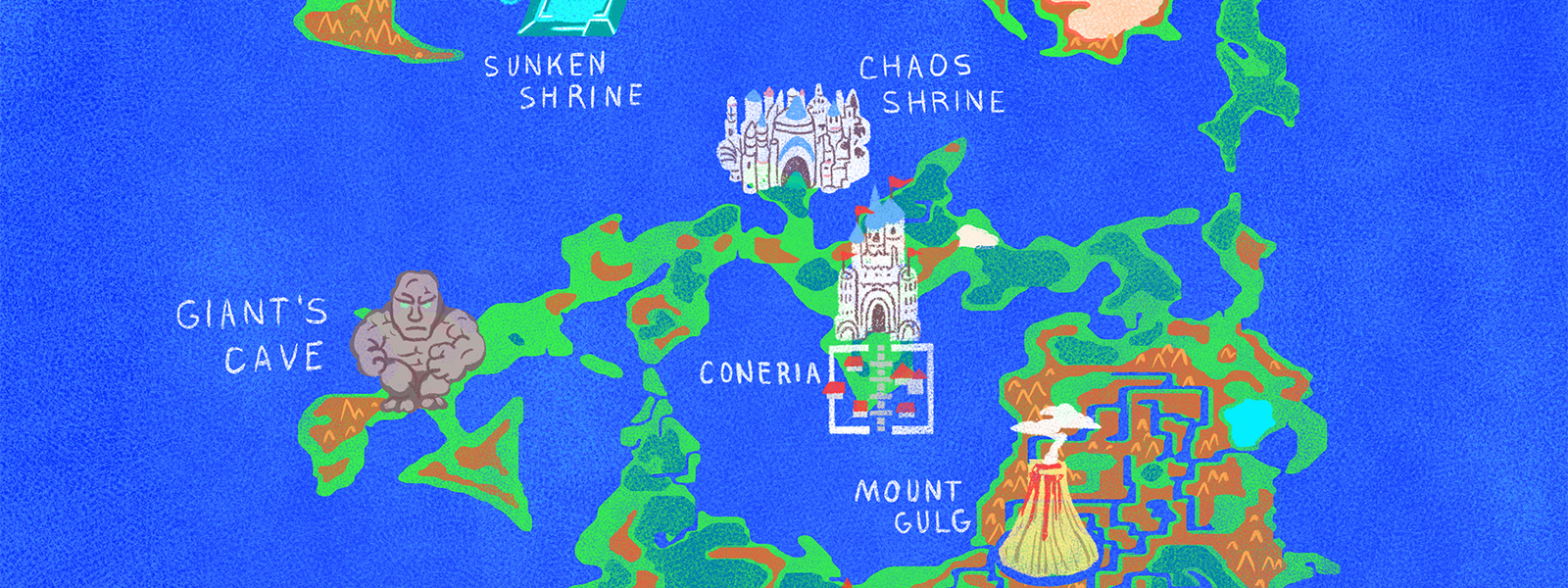Final Fantasy—first released in 1987—reached the English-speaking market in 1990. It has seen approximately 20 different releases over the years. My first encounter with it was as a child when I visited the U.S. for the first time. I’m going to go ahead and say that my first impressions were not great. I never left Corneria. I didn’t understand combat. The monster sprites kinda scared me. I was very young. And bad at games.
“And so their journey began. The four Warriors of Light felt overwhelmed by the great task destiny had placed upon them. They did not know the true significance of the four crystals they held in their hands… The crystal that once, long ago, shone with a light so brilliant. The time for their journey had come. The time to cast off the veil of darkness and bring the world once more into the light…”
Final Fantasy is the original in the series and so will always be lacking by comparison. It was plain to see the inspiration from tabletop RPGs of the time. Since this is the beginning, we can’t talk about what has changed quite yet. So let’s start with what this entry had. This entry features six classes—Fighter, Black Belt, Thief, Red Mage, White Mage, Black Mage. Each also has a direct upgrade tied to a side-quest. Black and White Magic also make an appearance. Magic uses a very Vancian-like mechanic: each level of spells has its own limits. While freedom of magic belongs to the three Mages, there are items that can also cast spells. These prove to be quite the game-changer.
Expectations
My expectations for this one were low. Not gutter low, mind you, I was being realistic. The original game in a lot of series’ are never as great as people remember them. Final Fantasy Origins featured the original MP system, something I was excited about. While I knew of the plot already, it made no sense to me. I was hoping I could figure out the details of the convoluted time loop.
Objectives
The version we played had a very simple 100% requirements—open all chests and fill the bestiary. Beating the game alone also unlocks secret artwork. This wouldn’t have been a problem if it wasn’t that last one. To unlock the secret artwork you have to beat the game twice: on easy and on normal difficulty. That wasn’t happening. And with no side quests aside from the class change, there isn’t much to this one.
Review
Plot-wise, Final Fantasy lacks. The main plot of Garland and the time loop was so convoluted and poorly explained. The game ends with—as my viewers pointed out—a Dungeon Master’s monologue. It detailed and outlined everything so that the players didn’t miss the grand tale. But the truth is, the finale is out of left-field, the writing falls flat and it shows the state of JRPGs then. A lot was left to the imagination of the players.
Plot aside, the gameplay was quite fun! The classes aren’t as varied as I remembered. A lot of the differences boil down to who can use magic—who learns it later—and what they can equip. The non-spellcasters don’t have much to them aside from who wears what. This isn’t aided by the fact that the strongest weapon in the game can be wielded by anyone. I am forgiving on this since this game borrows from Dungeons & Dragons. To be honest, early D&D did similar things: you cast magic or you don’t. Everyone who doesn’t sort of gets muddled together. Final Fantasy clearly wasn’t reinventing the wheel. Merely adopting it (molded by it, born in it, Bane joke, ad nauseam).
Final Thoughts
Based on my original thoughts going into this one, I am pleased to admit I enjoyed it and would play it again. I can see why it was made into a randomizer, it has a very open-ended feel. I will admit that finding items that can cast spells at no cost is the key to this game. Once you have a good one, you don’t worry about being able to clear enemies as much and it makes grinding easier.
Final (Fantasy) Score: Three Fiends out of Four


